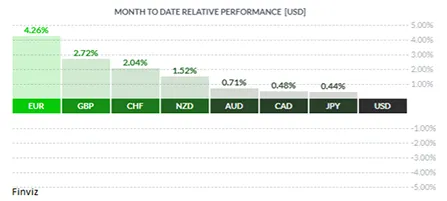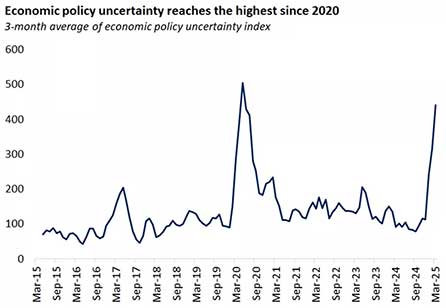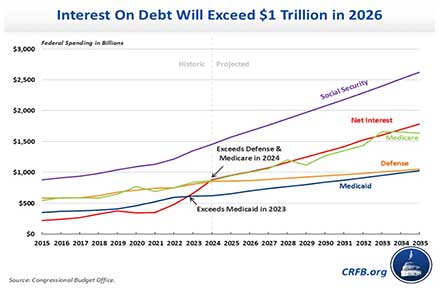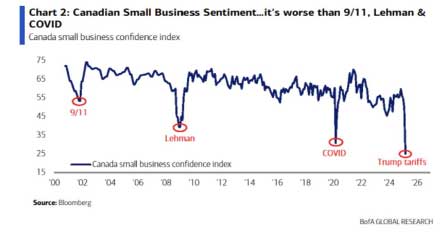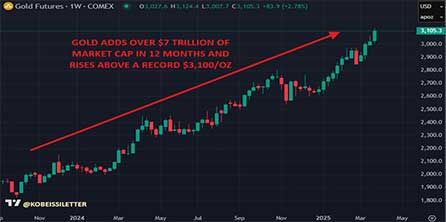There’s no turning back now, and the rest of the world knows it. The reciprocal tariffs set to be announced on Wednesday, April 2nd, won’t resolve uncertainty—they will merely mark the beginning. Whatever is unveiled will serve as the opening salvo of President Trump’s trade war. These tariffs will be subject to negotiation in the coming weeks, months, or even years. Furthermore, additional tariffs targeting specific countries (such as Venezuela and China) and industries (including lumber and pharmaceuticals) will prolong economic uncertainty.
This development should come as no surprise, as warnings have been issued. In June 2024, before assuming his role as Secretary of the Treasury, Scott Bessent suggested that a “grand economic reordering” could take place in the coming years—one that would overturn an eight-decade-long status quo. Similarly, in November 2024, a paper by Stephen Miran, Trump’s nominee for the White House Council of Economic Advisers, outlined strategies to reform global trade and counteract economic imbalances caused by what he described as an excessively strong USD. Based on currency performance in March, this strategy appears to be taking effect: the USD has become the worst-performing currency, having depreciated against every G-10 currency and nearly all of the 31 major currencies.
While details remain speculative, the broader strategy to weaken the USD revolves around bolstering American manufacturing and exports through tariff threats and restructuring security agreements. With the U.S. trade deficit hitting a record $1.2 trillion in 2024, some economists argue that a weaker dollar could help bridge the gap by making American exports more competitive. Trial balloons have even floated the idea of U.S. allies buying American debt in exchange for military protection or converting their existing debt holdings into 0% coupon bonds over 100 years.
It seems both allies and adversaries have received the message, and the global economic pivot has begun. The first major shift came as a shock: Germany’s government proposed a €500 billion, 10-year infrastructure program while excluding defense spending from its debt calculations. This move is a game-changer, challenging Germany’s long-standing fiscal conservatism and reshaping EU debt rules, potentially enabling other European nations to abandon austerity and increase spending.
The second shift came from China, which unveiled a “special action plan” aimed at boosting domestic consumption. This 30-point initiative includes measures to increase household income, reduce financial burdens, and enhance the overall consumer environment to encourage spending.
The U.S. requires a weaker dollar to maintain trade competitiveness while also needing lower interest rates to manage its unsustainable budget deficit. Treasury Secretary Bessent and President Trump are relying on tariff uncertainty to pressure the Federal Reserve into cutting rates. This year alone, the U.S. must roll over $9 trillion in debt and aims to secure more favorable terms. Interest payments on the national debt have now surpassed $1 trillion annually, exceeding defense spending. This aligns with Ferguson’s Law: Adam Ferguson, the Scottish political theorist, argued in his 1767 Essay on the History of Civil Society that any great power spending more on debt service than on defense risks losing its status as a great power.
As mentioned earlier, April 2nd will not bring resolution—only further uncertainty. This uncertainty will weigh on confidence, not just for businesses engaged in trade but for companies across various sectors, leading to hiring and capital expenditure paralysis. The resulting financial strain will cause equity markets to underperform, triggering a negative wealth effect that will eventually dampen consumer spending. Signs of this are already evident in the Canadian economy.
Take a look at the price action in gold. Gold has moved in a straight-line higher, rising over 50% in 12 months – this has never happened during a “healthy” economic backdrop.
I will leave you with this X tweet from Peter Mallouk. He’s a great follow.

